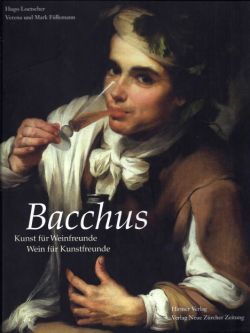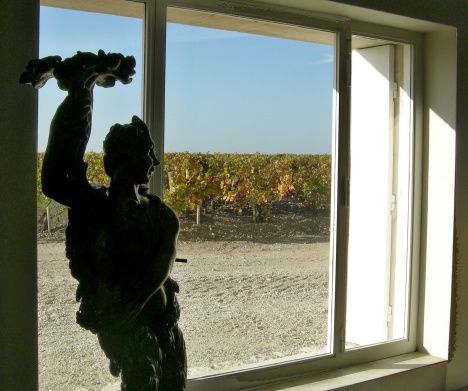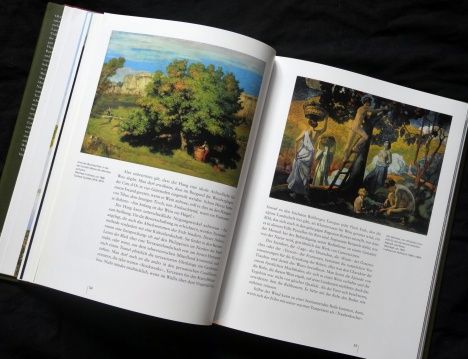 |
| Hugo Loetscher: "Bacchus - Art for Wine Lovers% Wine for Art Lovers" published by NZZ Verlag (Photo: P. Züllig) |
Who is this Bacchus? A god of wine or of intoxication? A figure in famous paintings from Leonardo da Vinci to Caravaggio and Rubens to Picasso and Gilbert&George? Or is Bacchus not Bacchus at all, but Dionysus, the same god but not drunk, rather statesman-like as he stands in the British Museum? The Swiss writer Hugo Loetscher - together with Verena and Mark Füllemann - approached this crucial question nine years ago, in the long out-of-print book "Bacchus, Kunst für Weinfreunde - Wein für Kunstfreunde".
Am I looking for wine or art? Am I a wine lover or an art lover? It's not that simple. In addition, my Christian training detached wine from the environment of Bacchus early on and placed it on the table of the Lord's Supper. And then, however, the decisive encounter in my studies with Rembrandt's "Prodigal Son", who squanders his fortune in wine bars, the raised glass in his right hand, his wife, the radiant Saskia, on his lap. My daughter's name is Saskia. Why is she called Saskia? Because of art, because of Rembrandt or because of wine? Questions that are difficult to answer today, forty years later.
 |
| Rembrandt and Saskia in the "Parable of the Prodigal Son"% c. 1635. Dresden State Art Collection% (Photo: P. Züllig) |
In any case, art has influenced me just as much as wine. Somehow they have both accompanied me for years in my quest for pleasure. I still remember well - it was more than ten years ago - how we drove up to the Chapel of the Cross in Ediger-Eller on the Moselle to admire the famous, iconographically probably unique stone relief "Christ in the Winepress". The depiction fascinated me: How did one come up with the idea of crushing Christ together with the cross in the press so that redeeming wine would flow from it? From the merry reveler with the young Saskia, dressed in precious garments, to the naked cross-bearing Jesus being pressed in the winepress, an aura of the mythical surrounds the art and the wine.
 |
| "Christ in the Winepress"% Stone relief from the 16th century in the Chapel of the Cross in Ediger-Eller% Moselle (Photo: P. Züllig) |
In the illustrated book "Bacchus" - published by Hirmer Verlag and Neue Zürcher Zeitung in 2004 - Hugo Loetscher asked the question: "Do you have to be sober when you write about wine?" The author only asked the question, but did not answer it in the book, and he can no longer answer it, because Hugo Loetscher has died in the meantime. "Inevitably, we encounter the drinker, the lonely as well as the convivial, the connoisseur as well as the taster or the drunkard, all those who come together for a drink, a revelry or a symposium, whether at the bar, in the bath or in the brothel, the wine at dinner on the family table or at a picnic, the wine bottle in the studio or in the garden, the funny glass as well as the sad one." Bacchus or Dionysus - the youngest of the Greek gods - is always the godfather.
 |
| Bacchus at Château Mouton-Rothschild (Photo: P. Züllig) |
The dusty coffee-table book - it's only dusty on the outside - with the writer's profound essays and the magnificent pictures has been sitting unnoticed in my library for years. Almost like those bottles on the shelf in the cellar that I call "miscellaneous"; where everything comes together that I take back from my wine trips or that well-meaning friends have brought me: "Have a taste!" And it's often the same with wines as with books: they are soon forgotten, dusty or even outdated. At some point - even if it's only because there's no more room - you reach for the shelf and... disappointed, surprised or even delighted. Bacchus with his entourage is - if you believe the doctrine of the gods - loud and noisy and is therefore also called Bromios (the noisy one). In this respect, Bacchus, the winegrower's dog, who accompanied us barking for hours in the vineyard during the harvest, has done all honour to his name. Not so "Bacchus", the book, for it has hidden behind the thick "Parker", the long Hachette series and the noble "Oxford Wine Encyclopaedia" with slipcase.
 |
| Bacchus% the vintner's dog% accompanies us all the hours and days during the harvest (Photo: P. Züllig) |
It is also so typical that knowledge, judgement, hard facts obscure all that images, poetry, art and culture have to say about wine. "Whether shone on by the sun or thriving in partial shade, whether as a tendril, whether on a stake or winding across the ground, the grape grows towards the sky, a sky full of signs. The vine did not remain one plant among others. It became the 'tree of life' in paradise according to Indian, rabbinic as well as Church Fathers' tradition." Perhaps it is worth remembering the cultural and historical significance of the vine and wine from time to time after all. "Whether Song of Songs or Psalm, Prophet or Ecclesiastes, no Old Testament without the chapters reserved for the grape, not only for sultanas, grape cake and grape honey, but also for wine, nor without the vinegar made from wine."
 |
| Wine culture in words and pictures (Photo: P. Züllig) |
I didn't just leaf through the recovered book, look at the pictures, explore the headings, I actually read it, essay by essay, for example: "How many Oechsle Truth?", "Educating for the Winepress" or "The Heavenly Grape Estate". Thoughts and stories that are deeply rooted in our culture. Now I can no longer decide: Am I now a wine drinker who enjoys art and culture, or an art lover who longs for a glass of wine (or two)?
Sincerely
Yours/Yours